The month of May is a spectacularly intense and interesting time in the bird world. Early breeders, such as Great Horned Owl, Bald Eagle, Common Raven, and Canada Goose have rapidly growing young. These early birds are now being joined by a host of long distance migrants. The majority of these songbirds wintered in the New World Tropics and now are flooding their North American breeding grounds. The urgency of spring migration is palpable, as the necessity of producing the next generation drives them ever onward. At our latitude most are now in full song, even in places where they will not breed. It’s Spring!
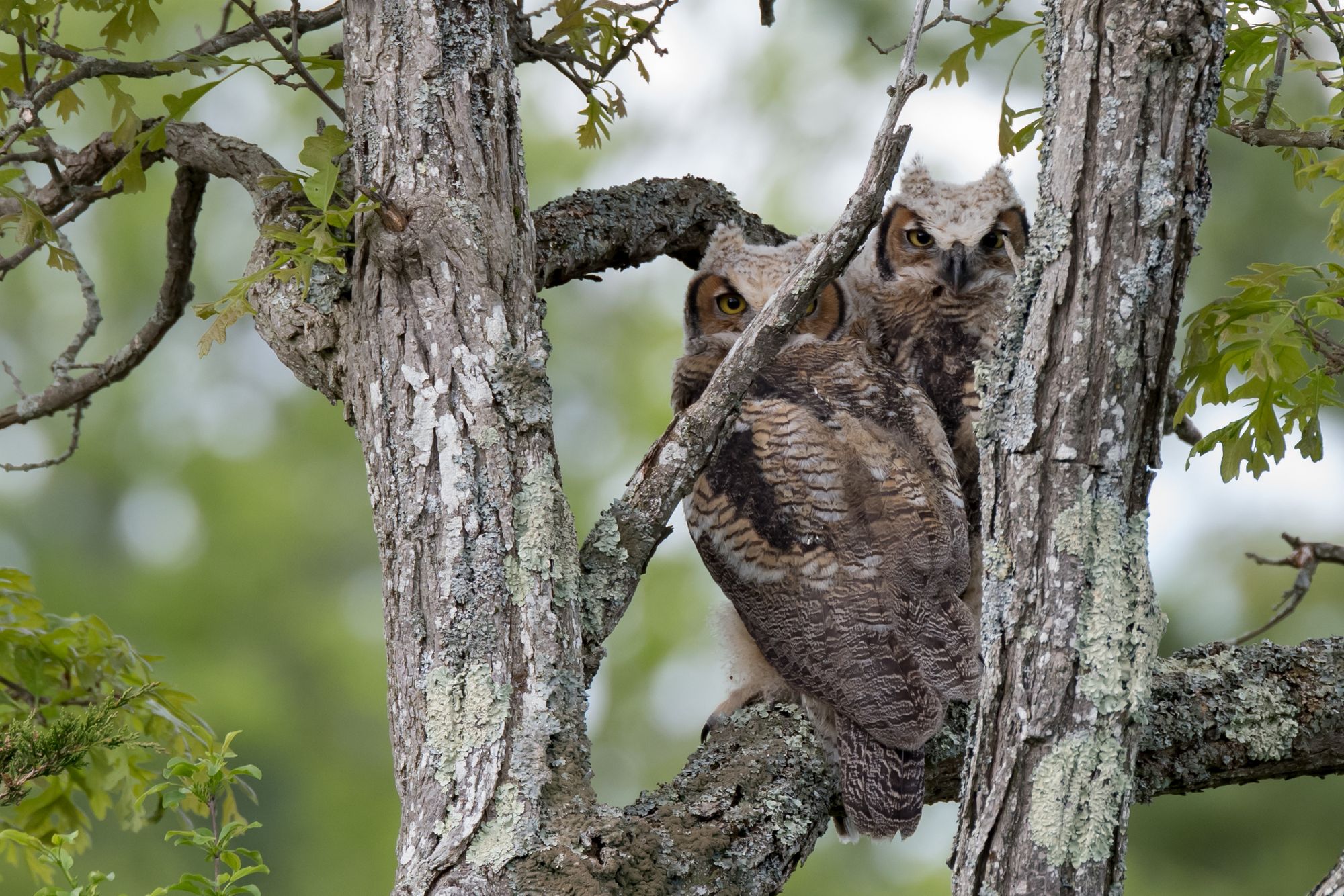
This plethora of birds also is interacting with the many other things going on in nature, from flora to frogs, so one hardly knows where to look or listen. While this avian rush north begins in our region by late April, May 1st is often the date when Neotropical color retouches our woods and shrub lands. Often landing in trees not yet fully leafed out, Rose-breasted Grosbeak and Scarlet Tanager are more visible than at any other time of year. Food may be scarce for these first arrivals, so the rosy chested male grosbeaks often come to feeders.
Over the next five weeks, dozens of species of warblers, vireos, thrushes, and flycatchers will pass through in orderly procession as the season progresses. By the time the last Blackpoll Warblers of late May and early June trek to the boreal forest, literally tens of millions to hundreds of millions of birds will fly at night over Lake Ontario and the St Lawrence River. They will repopulate the forests of Canada, dining on summers’ insect abundance. Fortunately, these travelers are not subject to the restrictions required of human travelers during pandemics, thus, they will have no problems crossing the border. Soon, the northern forests will once again ring with the voices of these feathered wayfarers.
For most of our Neotropical migrant songbirds, the northern limits of their range coincides with the northern extent of woody vegetation. The tundra lands north of this line provide wonderful habitat for a variety of shorebirds, waterfowl, raptors, and seabirds, but relatively few songbirds. Most of these, such as Snow Bunting and Horned Lark, are hardy continental wintering species adapted to life on open windy acreage. Neotropical songbirds seek vegetation cover at both ends of their journey and at stopovers in between. A thick tree or shrub may harbor food, provide protection from the wind, and keep a hungry predator at bay.
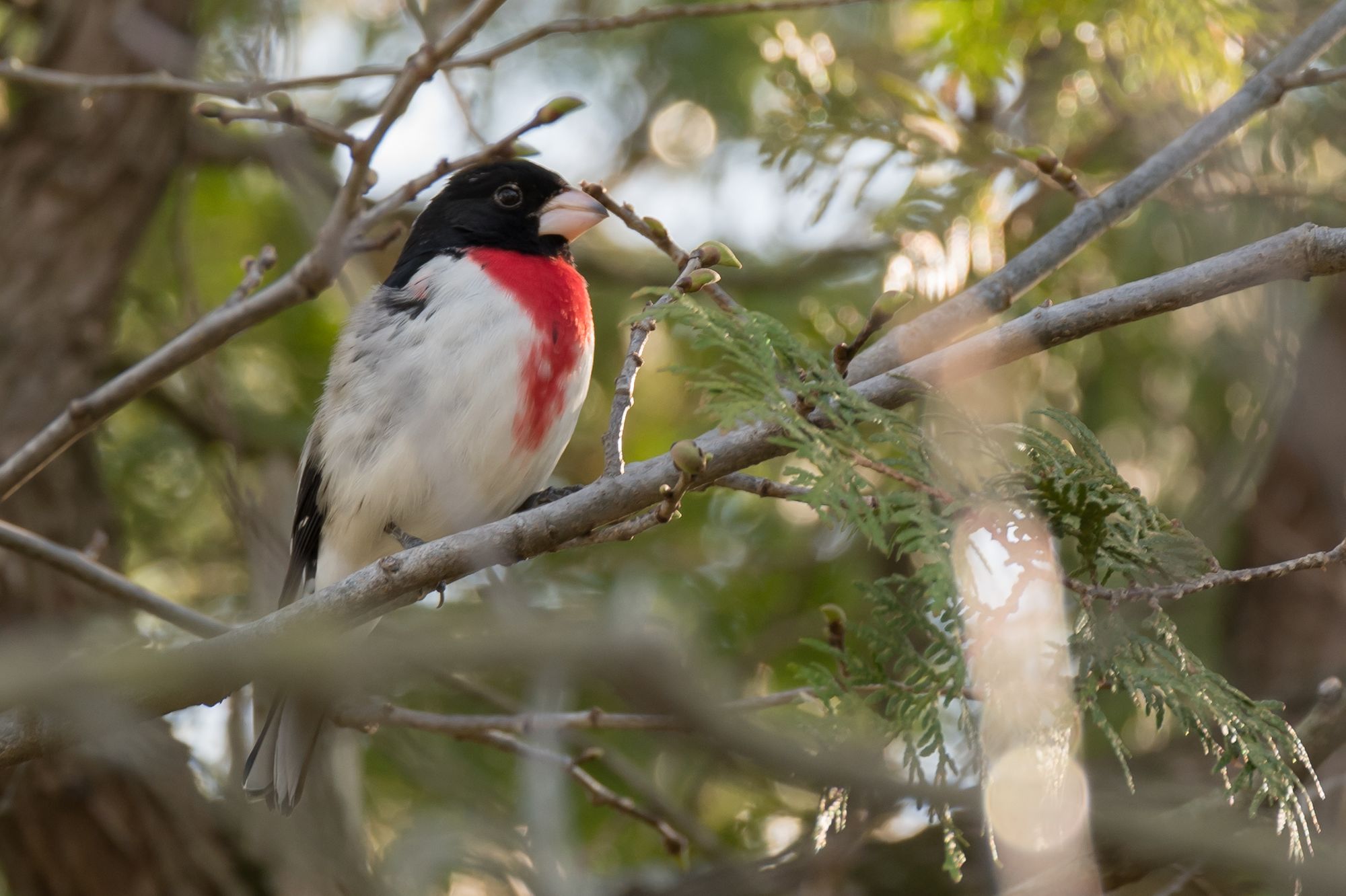
When I was a young birder, my mentors preached the gospel of being afield every day in May. Unlike the more leisurely fall migration, northbound birds do not linger any longer than they must. Southbound migration is driven by cold fronts, and other weather and day length events, which are necessary to stimulate movements. In spring, hormones are a critical stimulus and it takes very unfavorable weather, such as northerly gales and heavy rain, to stop the drive to reach breeding territory. Thus, some movement is occurring every day and one needs to be checking the landscape so as not to miss anything. For the birder, there are not enough Mays in a lifetime.
Spring migration often appears to be a series of pulses at our latitude. Warming weather and southerly winds put the most birds aloft. Rain, adverse winds, and other factors may cause a fallout of migrants, producing a “wave” day. Such waves are what many birders live for and are a time when songbirds literally drip from the trees. In a mid-May wave, it’s possible to see 20 or more species of warbler, including all local species of vireos, thrushes, and flycatchers. Great rarities, such as Worm-eating Warbler, may also spice up a wave day by appearing out of their normal range. I suspect that the birds have a dimmer view of conditions that cause wave days since their migration is often temporarily disrupted.
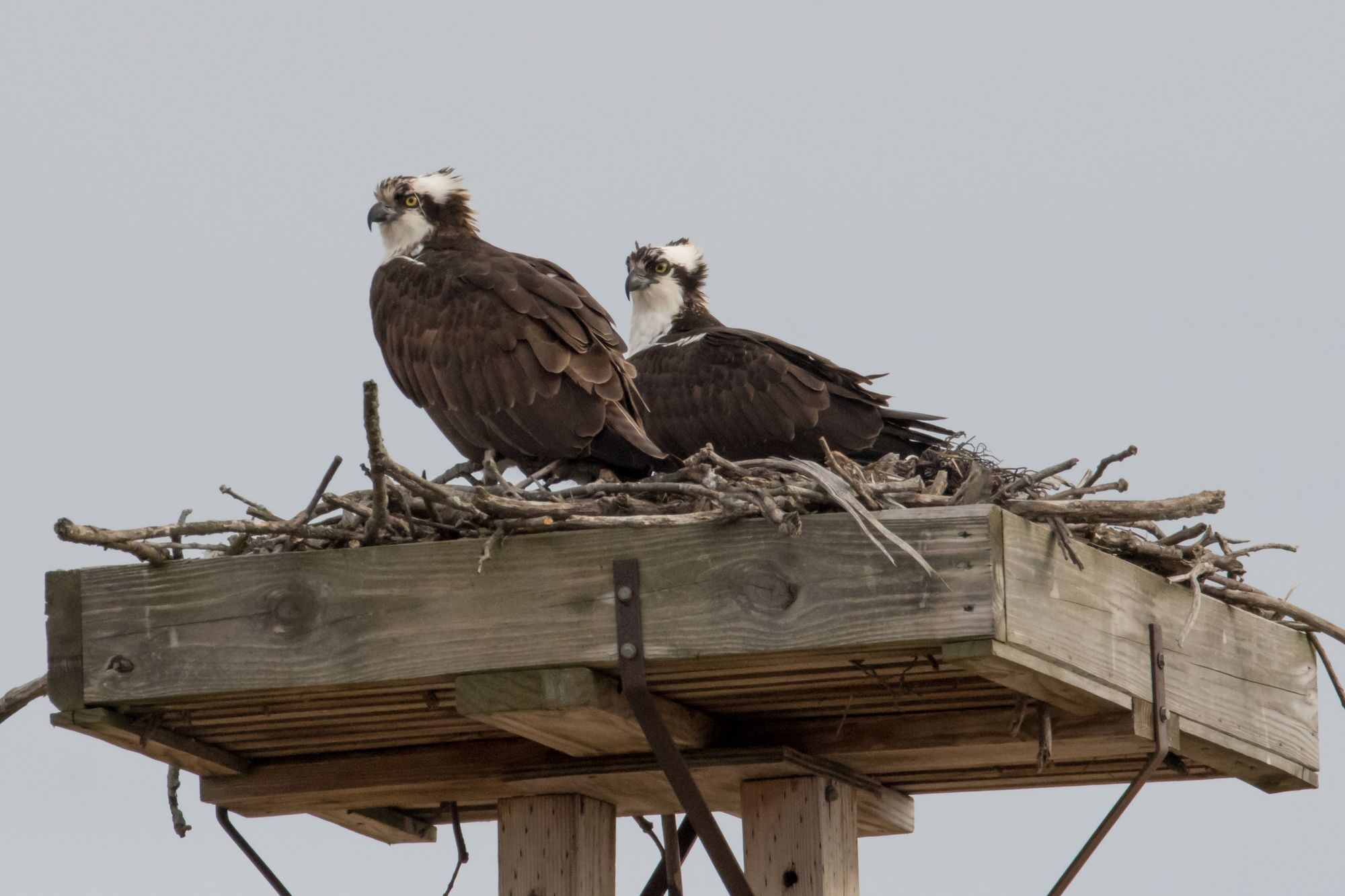
In the past, days without waves still had decent numbers of migrants about. That is becoming less and less true as the years go on. Reports from National Audubon suggest a 25% reduction (about 3 Billion) in bird populations since 1970. As an active field birder since 1966, I personally think that figure should be more like 35% at a minimum. The causes are myriad, but tropical deforestation, habitat destruction in North America, proliferation of many types of tall structures, and climate change, all undoubtedly are impacting many species. The pressures of the now massive human population increase, from about one billion in 1910 to seven and a half billion now, are clearly impacting all wild creatures. We are unfortunately leaving our successors an ever more impoverished planet, while seriously damaging many wildlife populations.
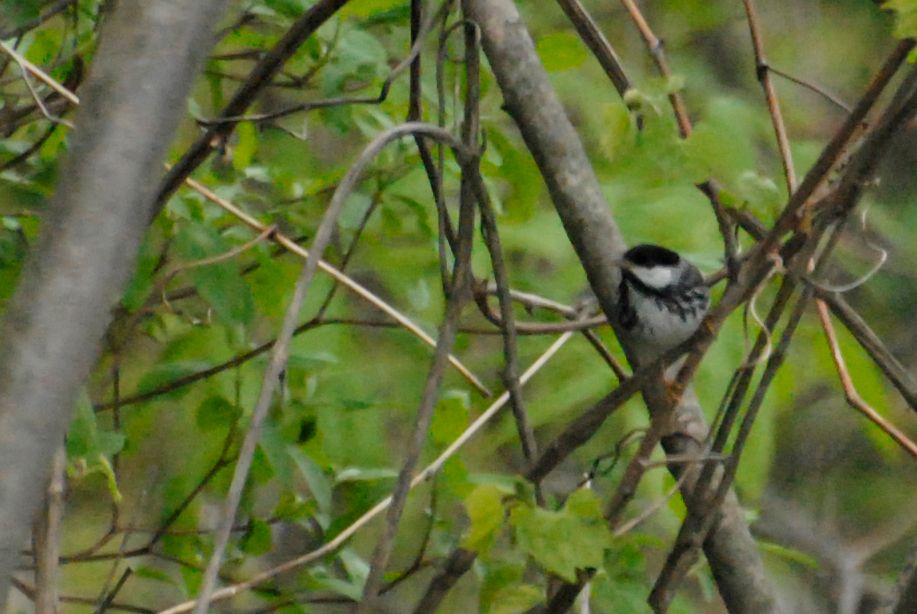
Rachel Carson, in her early 1960s now classic book, predicted a “silent spring”, as a result of overuse of chlorinated hydrocarbon pesticides. It turns out in hindsight that the greatest impacts of such poisons were on large, long-lived bird populations, rather than short-lived songbirds. Human society heard her message, reacted, and now, as I have noted previously in TILIFE issues, Bald Eagles and Osprey occur on the River in near unprecedented numbers. Looking back, banning DDT as a clear cause and effect problem was a simple solution, compared to the complexity of the conservation matters now at hand. Those who seek simple solutions to current conservation problems are doomed to disappointment.
That said, there are many things that the average person can do. Create and maintain habitat for migrants and nesting native birds around your cottage or home. Be aware of the reality that all forms of energy production and its siting have impacts. So-called “green energy” is renewable, yes, but from the standpoint of bird habitat, it’s not necessarily green UNLESS carefully sited with adequate mitigation for loss of habitat. From the birds’ standpoint, it matters not whether a major development is a shopping mall or a renewable energy complex.
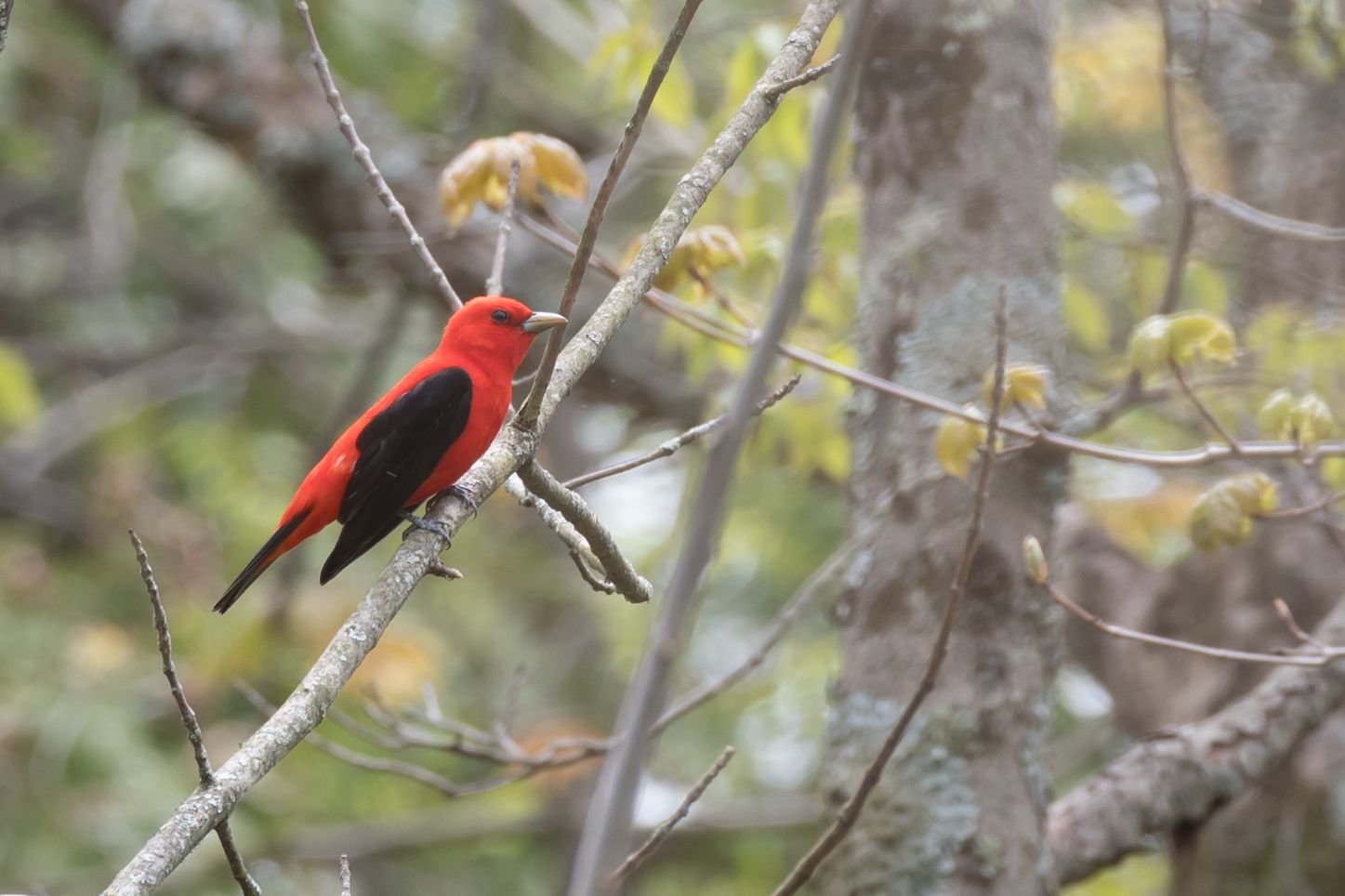
Habitat loss is habitat loss, plain and simple. If you own wooded land, avoid creating fragmenting features such as wide trails, keep cats indoors, and dogs fully controlled. There are a few things one can do to help all native birds, including Neotropical migrants. Their most critical needs include giving them places to breed, winter, and staging areas in between. Also, it would be helpful if we humans would stop putting tall obstacles in the skies that these birds must traverse during their cycle of life.
So help where you can, but most importantly, get out there and welcome our fellow travelers back for their brief sojourn with us. A glimpse of a male Blackburnian Warbler, Scarlet Tanager, or many other migrants, will provide ample repayment for your time, and food for your soul.
By Sherri Leigh Smith, goshawk@gisco.net
Photographs by Julie Covey, Nature in NY (https:www.facebook.com/NatureinNNY/)]
Sherri Leigh Smith is the Senior Ornithologist in northern NY. He is passionate about birds and their conservation. Sherri Leigh has written numerous articles for TI Life, and you can see several of them here.
Editor’s Note: This editor is both pleased and appreciative to Sherri Leigh Smith for taking the time to help us understand more about nature in the islands. She and nature photographer Julie Covey, have provided a wonderful sample for the fall of 2020, the winter of 2021 and now spring 2021. I said last month that already I am getting better at looking at the sky and those flying by as well as understanding the how and why! This week we heard a whooshing sound of swan wings!
Posted in: Volume 16, Issue 5, May 2021, Nature
Please click here if you are unable to post your comment.
